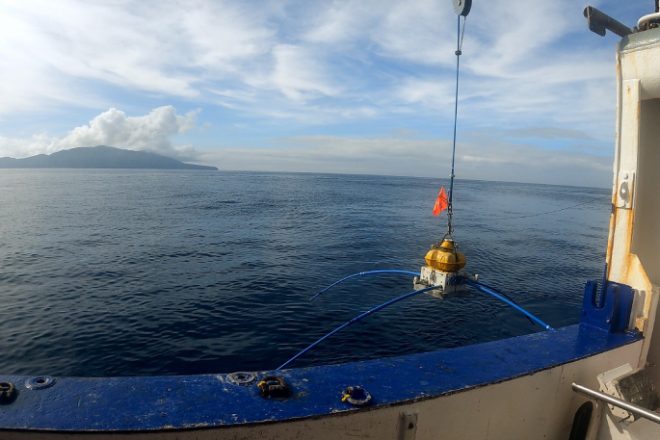Исследовательское судно Tangaroa отправилось в последнее путешествие по изучению вулканических систем вулканов островов Вакаари/Уайт и Тухуа/Майор. Это часть программы «Под волнами», проводимой компанией GNS Science. Цель состоит в том, чтобы глубже понять триггеры, опасности и последствия потенциальных вулканических явлений, таких как пеплопад, пирокластические потоки, оползни и цунами.
Ученые из GNS Science, Института океанографии им. Скриппса и два амбассадора BLAKE GNS установят оставшиеся 39 из 200 электромагнитных датчиков на дне океана с 28 марта по 12 апреля. Эти датчики позволят получать изображения магматических систем, питающих вулканы, и определять зоны активной гидротермальной вентиляции.
По словам Крейга Миллера, старшего геофизика по вулканам GNS Science и руководителя программы, предыдущие путешествия уже позволили получить новую информацию о частоте, размере и причинах прошлых извержений. Предварительный анализ показал наличие глубоких флюидов, возможно, магмы, к северо-западу от Вакаари. Если это правда, это может повлиять на мониторинг вулкана в будущем. Сейсмическая активность в этом районе может указывать на повышение вулканической активности.
Предварительные результаты проб донных отложений указывают на то, что за последние несколько тысяч лет произошло больше извержений по сравнению с извержениями, зарегистрированными с 1800-х годов. Теперь команда хочет выяснить, были ли эти извержения достаточно большими, чтобы доставить пепел на материк.
Данные предыдущих подводных исследований позволили выявить места предыдущей гидротермальной активности и активных подводных просачиваний гидротермальных флюидов. Эти результаты, а также аэрофотосъемка, проведенная в начале 2023 года с использованием системы SkyTem, помогают составить карту прошлой и настоящей гидротермальной активности на всем вулкане. Эта информация используется для создания точных трехмерных моделей, показывающих участки ослабленных горных пород и места прошлых оползней. Это очень важно, поскольку оползни могут вызвать извержение вулкана или цунами.
«Получение изображений недр способствует надежному численному моделированию и моделированию, которые мы начинаем использовать для оценки множества возможных сценариев развития вулканических событий в заливе Пленти в будущем», — говорит Крейг. «Если мы сможем определить вероятность и последствия этих вулканических опасностей, мы сможем лучше подготовиться к ним в случае их возникновения».
Программа Beneath the Waves — это инициатива, реализуемая под руководством GNS при участии сотрудников различных университетов и организаций по управлению чрезвычайными ситуациями.




























































